In the modern world of culinary exploration, the search for more healthy and nutritious ingredients is a constant practice. One such ingredient, nutritional yeast, widely recognized for its cheesy, nutty, and savory flavor, is a staple in various plant-based diets. But what if you are unable to add this powerful ingredient to your dish because of yeast intolerance or certain diseases? Fear not because we have got you covered!
This is the time to start searching for alternatives to nutritional yeast that might already be there on your kitchen counter.
Stay with us to explore some easily available alternatives to add to your ever-delicious recipes!
What is Nutritional yeast?
Nutritional yeast- golden powdery fish-like flakes known as Nooch, is a common food ingredient in vegan pantries. It is derived from a deactivated yeast strain of one of the most popular species saccharomyces cerevisiae, a single-celled fungus used in winemaking, baking, and brewing. Nutritional yeast has gained popularity in the past few years and can be located in almost every grocery store around the block. It is the principal factor of adding umami flavor to the dishes, known as a pleasant and savory taste.
Nutritional yeast imparts cheesy flavor to the recipes and takes on the role of parmesan by sprinkling on pasta, popcorn, and risotto and incorporating it into sauces for a savory taste. However, it is not considered ideal for baking as it is a deactivated strain and, therefore, cannot cause leavening. Nutritional yeast is popular among vegans and vegetarians due to its high protein, fiber, and vitamin B complex content.

How is it produced?
Nutritional yeast is prepared by culturing yeast in a nutrient-rich medium like corn dextrose or beet molasses. The yeast takes up to two weeks to mature; after that, it is deactivated and killed by heating, pasteurizing, and drying. The killing of the cells releases the proteins and amino acids like glutamic acid. This glutamate gives the nooch its cheese-like umami flavor, whereas the drying process imparts the nutty flavor. The drying shrinks them into thin, flat flakes that are packaged and stored.
Yeasts can use inexpensive raw materials like molasses to produce biomass, proteins, and concentrates. The same is true with nutritional yeasts; they are environment friendly and utilize waste to produce large amounts of biomass in less time from small quantities of substrates.
Is it the same as yeast extract?
Nooch and yeast are NOT interchangeable. They may be produced from the same yeast species but, the difference lies in the production process.
| Yeast extract | Nutritional yeast |
|---|---|
| Yeast extract is prepared by breaking down the cell wall to release its contents | Nutritional yeast is prepared by deactivating the whole cells |
| It is always available in thick gel and moist powder forms | It always comes dry in the form of flakes, powder and small granules |
| It always comes dry in the form of flakes, powder, and small granules | It is not suitable for baking as it will fails to rise and is often used as a seasoning |
| Yeast needs to be activated before use by dissolving in warm water for 5-10 minutes | It is grown specifically for its nutritional properties |
| Yeast has a higher shelf life than nutritional yeast | It needs refrigeration after opening |
Nutrient composition of nutritional yeast:
According to USDA, 15 grams or three tablespoons of dried nutritional yeast renders 60 calories and 5g of carbohydrates. With 8g of protein, it is a complete protein encompassing all the essential amino acids. Nutritional yeast is a good source of fiber, possessing 4g in 3 tablespoons.
Nooch loads up with beneficial micronutrients like Vitamin B12; the fortified ones fulfill 30-180% of the recommended dietary allowance (RDA). Other essential vitamins and minerals incorporated in nooch are Calcium, Magnesium, Phosphorus, Potassium, Sodium, Vitamin B3, Vitamin B6, Vitamin B9, and Folate.
Nutritional composition:
| Nutrients (15gm) | Amount |
|---|---|
| Calories | 60 |
| CHO | 5g |
| Proteins | 8g |
| Fiber | 4g |
| Fats | Trace |
| Calcium | 20mg |
| Magnesium | 20 mg |
| Phosphorus | 170 mg |
| Potassium | 320 mg |
| Sodium | 4.95 mg |
| Vitamin B3 | 15 mg |
| Vitamin B5 | 33 mg |
| Vitamin B6 | 9.6 mg |
| Folate | 40 mcg |
| Vitamin B12 | 25 mcg |
Role in human nutrition:
Being a rich source of proteins, B vitamins, and minerals, they benefit the body in various ways:
Reduce anemia:
Vegans are usually deficient in B12 as it mainly comes from animals. Nutritional yeast, rich in Folate and Vitamin B12, is crucial for anemia and a healthy nervous system, Red blood cell production, and DNA synthesis.
Cardiovascular health:
Nooch contains a unique soluble fiber named beta-glucan, found in the cell walls of plants, fungi, and bacteria. It is responsible for elevating levels of HDL.
Potassium is found in high quantities in nutritional yeast and helps lower blood pressure.
Immune system:
Two compounds beta-glucan and Alpha mannan found in nutritional yeast have antibacterial properties that protect the immune system. Beta-glucan improves the gut microbiome and benefits the immune system by stimulating macrophages.
Constipation:
The recommended dietary allowance of fiber for an average American is 25-35g per day. Nutritional yeast contains 4 g of fiber that aids constipation by providing bulk and softness to stool.
Diabetes:
High fiber regulates blood glucose levels and slows digestion thereby, decreasing the glycemic response to food.
Healthy pregnancy:
Folate is one of the most crucial nutrients in pregnancy, especially in the first 12 weeks. Nutritional yeast and other folate-rich foods aid in fulfilling the daily requirement of folate for pregnant women.
Uses:
Nutritional yeast finds its way into a variety of recipes, including:
- Thickening of soups and sauces to increase their richness
- Sprinkle on pasta, roasted vegetables, risotto, and popcorn
- As a substitute for cheese
- In baked beans
- Add to homemade salad
- Add to baked steamed or roasted green veggies like kale
- Can be added to scrambled egg
Potential side effects of Nutritional yeast:
Despite nutritional yeast having plenty of benefits, there are downsides to it as well. Some of them are:
Digestive issue:
We all agree that a high-fiber diet is crucial for gut and bowel health, however, fiber intake needs to be increased gradually if a person is not used to it. Too much fiber at one time can cause abdominal discomfort such as cramps and diarrhea. So, the best way to incorporate fiber into a diet is to start the intake slowly and gradually increase the amount.
Headaches:
A compound called tyramine, a derivative of the amino acid tyrosine is found in nutritional yeast. According to literature, this compound causes migraines in some people by acting on the central nervous system.
Facial flushing:
Nooch is a rich source of Niacin (vitamin B3) responsible for metabolism and enzyme functions, however, consuming a large amount may cause facial flushing followed by burning and itching 15-20 minutes after ingestion of niacin.
Yeast intolerance:
The intake of nutritional yeast In Irritable bowel diseases such as chrons diseases causes intolerance to yeast leading to worse symptoms.
Why use the substitutes:
Low availability, yeast allergies or sensitivities, and a desire for change are some reasons one may want to use alternatives to nutritional yeast.
Low availability:
Due to the scarce availability of nutritional yeast in some regions, one can opt for the alternatives of it.
Yeast allergy:
Despite nutritional yeast not being a common allergen, it is possible to develop an allergy or intolerance against it. People allergic to it might develop eczema or asthma symptoms by consuming the yeast.
Desire for change:
Desiring for a change in the flavor and texture can lead one to pick an alternative to the said yeast.
Substitutes for Nutritional Yeast:
Fortunately, there are plenty of substitutes for nutritional yeast in cooking to add flavor to your dishes:
1. Chickpea flour:
Chickpeas as a substitute for nutritional yeast might sound surprising, but ample protein and B vitamin complex make it a suitable alternative. You can buy the readymade flour or ground the chickpeas yourself. Chickpea flour might not have the cheesiness of the nutritional yeast, but browning it will bring out the savory and earthy taste of this superior alternative.
Want a savory topping for your pasta and popcorn? Just mix the chickpea powder with a pinch of onion powder and baker’s yeast and sprinkle it on, you have your dish all ready!

2. Brewer’s yeast:
Brewer’s yeast is considered the supreme substitute for Nutritional yeast in terms of texture. Both yeasts are made of the same species, Saccharomyces cerevisiae. However, unlike Nutritional yeast, brewer’s yeast is a by-product of beer brewing and gives a beefy flavor and slight beer-like taste while providing a similar thickening effect. It comes in powder and flake form and functions as a thickening of sauces.

3. Marmite/vegemite:
This dark brown spread is more common in the UK and Australia than in the U.S., and just like brewer’s yeast, it is a by-product of the beer brewing process. It is best used in recipes and sauces and gives a savory flavor and fewer bitter notes. The spread form of Marmite/ Vegemite makes it unsuitable for garnishing purposes.

4. Soy sauce:
Soy sauce, found in almost everybody’s pantry, is a great replacement and an easy substitute. It is there at the top with nutritional yeast as a flavor enhancer that might not give the cheesy flavor to the recipe but imparts savory and umami flavor. One downside of this ingredient is its high amount of salt that can be balanced by adding less table salt to your recipe.

5. White miso paste:
White miso paste, made of fermented soybeans is a rich source of probiotics and K vitamin. It is a savory, salty paste that imparts umami and nutty flavor. There are plenty of other miso pastes available, but the white one takes the throne as it is milder than other varieties and is great for making creamy sauces. It is best suited to add in sauces and soups as it is a paste. The umami flavor of this paste is more concentrated so you need only as much in your recipes.

6. Coconut amimos:
Coconut amimos are similar to soy sauce in terms of consistency, but not taste. They are not as salty as soy sauce and have a sweet taste with nutty and savory flavor. Coconut amimos are suitable for restrictive diets and allergies as they are gluten-free, soy-free, and yeast-free. Amimos are prepared from fermented coconut trees and are a good option for stews, casseroles, stir fry, dressings, and sauces due to their liquid consistency.

7. Cashews:
Cashews not only give nutty flavor but also impart a creamy texture to the sauce. Ground Cashews can be a great alternative to sprinkle on pasta and steamed vegetables and can be soaked and blended into vegan cheese sauce.
Combine it with garlic powder, brewer’s yeast, and some salt; you get something similar to parmesan!

8. Sunflower seeds:
Shelled sunflower seeds are a suitable nut-free option and are used in the same way as soaked cashews. Ground seeds can be used as a topper for pasta and popcorn.

9. Dried or fried onion flakes:
Crispy and savory onion flakes have the right texture to replace nutritional yeast flakes in your recipes. They have a tangy but not cheesy flavor but may take extra time to prepare. Fried onions have some fat content, so a pinch is enough to add to your recipes.

10. Dried mushrooms:
Mushrooms make a good and healthy substitute because they are a type of fungus. Porcini, oyster, shiitake, and chanterelle are some of the mushrooms in which Porcini replicates the nooch the best owing to their earthy and savory taste.
They are packed with essential nutrients like vitamin B complex, potassium, antioxidants, and even proteins. Dried mushrooms taste like broth and are meaty but not cheesy, hence perfect to add in soups and stir-fries. You can buy pre-dried mushrooms or self-dry and grind them to achieve the powder form.

11. Vegan parmesan cheese:
Vegan parmesan cheese has a slightly bitter taste and savory flavor. It provides the cheesiness of the nutritional yeast that makes it suitable to use in various cheese sauce recipes. It can also be used as shredded vegan cheddar; so if your nearby grocery store is out of nooch, feel free to extend your hand towards vegan parmesan cheese!

12. Vegetable boullin:
Vegetable boullin is a concentrated form of broth or stock made up of vegetables, herbs, and spices. It is a great substitute in cheese sauces and soups providing rich, savory, and umami flavor, though it is milder than nutritional yeast. Boullin comes in paste form with high salt content. Vegetable broth can also be used if boullin is not available, as it is ideal for curries, soups, and stews.

13. Garlic powder:
Garlic powder; an essential found in everybody’s kitchen imparts savory and umami flavor to a recipe just like nutritional yeast. It enhances the taste of any dish it is included in such as pasta, soups, and salad dressings.

14. Tahini:
It is a paste made of ground-up sesame seeds and can be thrown in dressings, dips, and sauces.
Tahini has a slightly nutty taste and the same amount of it can be used as a substitute for nutritional yeast.

While nutritional yeast has a special place in the hearts of many, its substitutes open the world to several possibilities. Whether one is suffering from an allergy or a disease or just wants to change their palette, the alternatives can bring a variety of tastes alongside the classic nutty, savory, and umami flavor of nutritional yeast to your table.


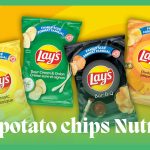
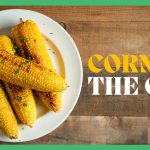
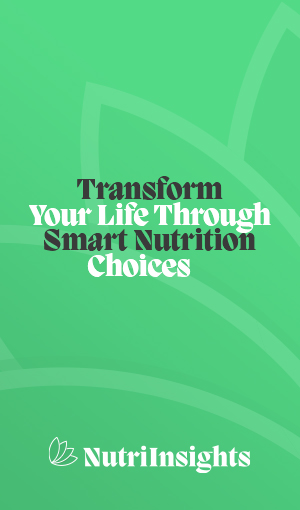

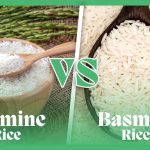
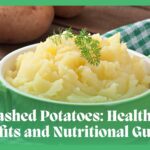
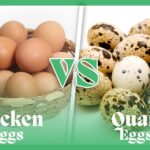
I cannot thank you enough for the blogReally looking forward to read more Want more